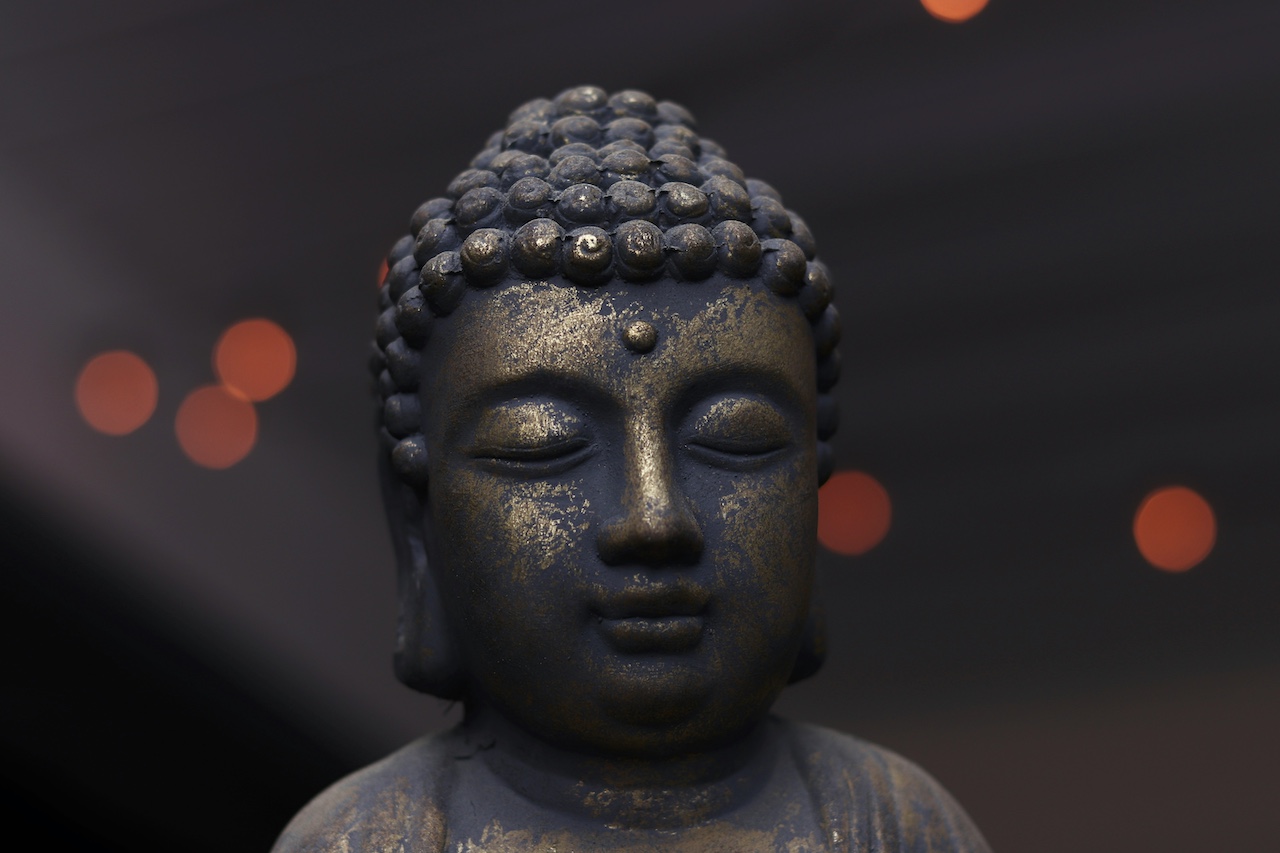Entering Shamatha Meditation
Tips for the beginner meditator from a Tibetan Buddhist monk The post Entering Shamatha Meditation appeared first on Tricycle: The Buddhist Review.

Tips for the beginner meditator from a Tibetan Buddhist monk
By Khenpo Sherab Sangpo May 24, 2025 Photo by Roy McCree
Photo by Roy McCreeIn previous times, after the Buddha’s precious teachings had spread widely, many people manifested the results of the path and achieved enlightenment in one lifetime. In the White Lotus of Compassion Sutra, the Buddha says that present-day sentient beings like us would be extremely difficult to teach how to train our minds. Seeking only the things of this life, we mistakenly engage in strong negative thoughts and actions; meeting with all sorts of suffering and torment, we lack compassion. The Buddha says that during such times as these, regardless of training and effort, it would be difficult for people to immediately develop realizations of the profound view.
Therefore, it is important first to develop the practice of the meditative concentration of shamatha—in Tibetan, shiné—a deeply peaceful concentration or absorption in stillness, perhaps best translated as “calm-abiding meditation.” Shamatha is a meditation in which the movement of the mind toward outer objects—forms, sounds, or other objects of the six senses—is calmed so that the mind dwells within, focused solely on its observed internal object, such as the breath.
The word shamatha can be broken down into shama, which means “peace”; and tha, which means “dwelling,” “stability,” or “abiding.” This peacefulness means that the mind is not overcome with anger, sadness, craving, or any other strong emotion that might distract it from its object of meditation—such as the breath or a Buddha statue—on which it calmly abides. When resting in shamatha meditation, the mind is relaxed and at ease without difficulty. It is not involved in forced or contrived activity but naturally rests in a state of peaceful stability. As the mind rests single-pointedly on its object, it is not distracted by external objects. It remains stable and focused on its object so that few thoughts arise; the mind is calm. In short, shamatha means “peace.”
The attainment of shamatha meditation allows a practitioner to enter any of a large number of meditative concentrations called samadhi. The Sanskrit word samadhi means “to hold things together”; the Tibetan equivalent, ting nge dzin, means “to hold things firmly without movement.” In English, samadhi is often translated as “meditative concentration.” According to Mipham Rinpoche, samadhi is a balanced mind that remains solely focused with its full capability on an object—abiding in balance, in accordance with its object, and tending neither toward sinking nor excitement.
Why must shamatha meditation be cultivated before vipashyana (insight meditation)? When calm abiding has been achieved, all subsequent analytical meditation and all virtuous activities will have great power as the mind is engaged without distraction. In addition, shamatha is the basis of other types of meditation, all of which require the clarity and stability gained from the foundational practice of calm-abiding meditation.
When you practice meditative concentration, your thoughts may flow very strongly—like a stream rushing down a steep mountain.
When practicing shamatha, a beginning meditator is not capable of remaining focused on their object for even a moment; they may even feel that their mind has more thoughts and is more excited or agitated than before. Noticing this is actually a sign of progress in meditation. In either case, try not to be dejected, discouraged by laziness, or think that you cannot meditate. Often, my students think that shamatha meditation makes their thoughts more gross—more coarse, vivid, or exaggerated—but this is not true. Through their practice of meditation, they are simply becoming more aware of the energetic qualities of their thoughts, which they previously did not recognize.
Don’t think that as a beginner you will be unable to meditate on the spiritual path. Through methods learned from your teacher’s instructions, you will still your mind. If you can uplift your mind without stopping your meditation practice, eventually your coarse thoughts will be pacified so that you can remain focused on your object for a few moments or even longer. You need to apply many methods without trying too hard or becoming overly serious about it.
At first you cannot give the mind free rein to follow whatever thoughts arise, but you also shouldn’t be too uptight about it. You must practice as suited to your nature and constitution. When the mind is concentrated too tightly, an increase of thought occurs, causing a dislike for meditation or even a serious disturbance of your heart energy. This is your subtle, inner wind energy and life force. Therefore, you must apply a suitable level of concentration and gently relax without pushing yourself to concentrate too much. At the same time, you should avoid allowing your concentration to get too loose.
My root teachers said that it is important to practice in frequent short sessions. With brief sessions, the mind is not obstructed by sinking or excitement; and with frequent sessions, you develop genuine faultless meditation. Therefore, I advise beginners to meditate for no more than ten or fifteen minutes and to avoid pushing themselves too hard in their sessions.
When you practice meditative concentration, your thoughts may flow very strongly—like a stream rushing down a steep mountain— and it may be difficult for the mind to be still. At that time, you must not become discouraged. Remembering the beneficial qualities of meditative concentration, you should persevere by placing your mind on your meditational object repeatedly. If you do this, it is natural that you will make progress every day.
Because you have been long accustomed to following your thoughts without applying an antidote to mental wandering, it is not easy to bring the mind under control. However, as Shantideva remarks in the Bodhicharyavatara:
There is nothing that does not grow light
through habit and familiarity.
Putting up with little cares
I’ll train myself to bear with great adversity!
If you practice with a suitable degree of focus and concentration—not too loose and not too tight—your mind, which is like a stream chasing after objects and turbulent with many thoughts, will attain more stability. Both coarse and subtle thoughts will become pacified. In this state of meditative concentration, you will feel joy naturally, and you will have enthusiasm for practicing. It is important to persevere in keeping the continuum of your meditative concentration steady. This feeling of naturally arising joy is the beginning of a samadhi that involves some movement of thought.
In this early phase of samadhi, the mind is like a mountain stream that has reached a constriction, where the water still moves without stopping, but it is calmer and more subdued than before. At this point, when directing the mind toward an object during meditation, there may sometimes be more clarity; the mind may be still at times and at other times, not. Under the influence of thoughts, the mind does not remain focused on a single point; it alternates between movement and stillness. It is important not to follow thoughts and to focus without fixation. Meditating like this continually, the muddy water of the mind, if left in stillness, will gradually be cleared of silt and all thoughts will be stilled. If you notice that your mind attains stability—focusing on your observed object without the interruption of thoughts—that is good.
◆
From The Heart of Tibetan Buddhism by Khenpo Sherab Sangpo. © 2024 by Khenpo Sherab Sangpo. Reprinted in arrangement with Shambhala Publications, Inc. Boulder, CO
![]()
Thank you for subscribing to Tricycle! As a nonprofit, we depend on readers like you to keep Buddhist teachings and practices widely available.

 Troov
Troov 






























